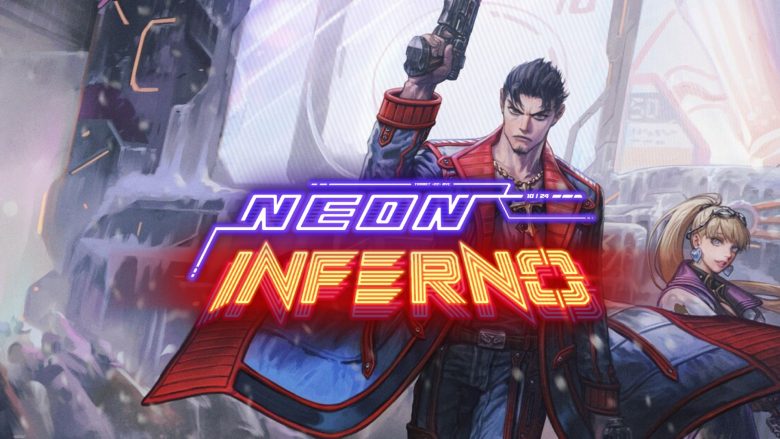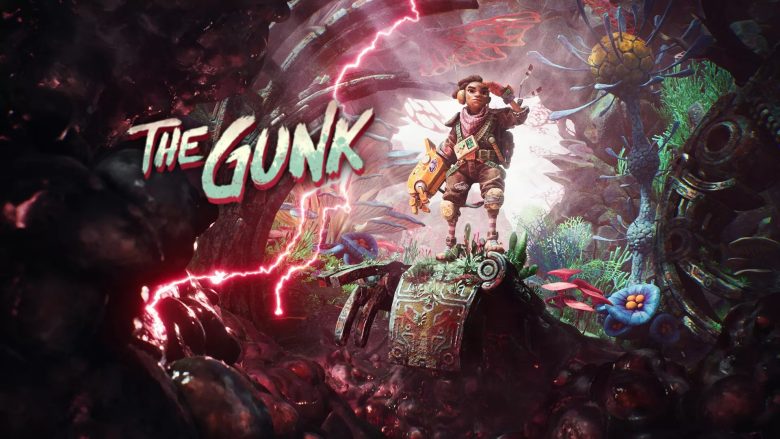Let us learn more about Melinoë, Princess of the Underworld, Zagreus’ younger sister, and the protagonist of Hades II.

Since Supergiant Games unveiled the reveal trailer for Hades II, the figure of Melinoë has undoubtedly captured the attention of the most devoted fans. The legendary Greek demigoddess will be the undisputed heroine in Supergiant Games’ enchanting sequel to the award-winning rogue-like dungeon crawler.
It’s particularly intriguing that such a mysterious and powerful figure plays such an essential role. As a result, it is reasonable to hypothesize on how Hades II will deepen the connection between epos, mythology, and witchcraft.
But first, let’s go back in time to December 9, 2022. What details did the trailer reveal to us? Who is Melinoë? What is her relationship to Greek myths, above all? Here’s what we know so far.
Fighting in the Moonlight
While you may not have spotted them right away, Supergiant Games has already revealed some crucial plot details for Hades II, including two of the sequel’s most iconic characters.
In the Reveal Trailer, Melinoë and an enigmatic hooded witch fight fiercely. The fight takes place under the light of a beautiful full moon, as evidenced by the enchanting animated trailer made by Studio Grackle.

The tenseness is palpable. When the battle appears to be turning in favor of the Greek demigoddess, the witch unveils her hidden art. She enlists the help of arcane power, a mysterious and powerful magical circle.
Melinoë falls prey to the enchantment, completely unaware of the trap set for her. A powerful explosion knocks her to the ground, declaring her defeat.


Just as the witch is about to deliver the fatal blow to the protagonist, she suddenly stops herself, extending her palm to the demigoddess and inviting her to rise. Who is the enigmatic witch? And why did she assist Melinoë?

She is Hecate, the Moon-related Goddess of Witchcraft, Necromancy, Doorways, and Crossroads. Hecate is a wise and mysterious goddess, with a deep understanding of magic and the mystical realms. She is a mentor, an expert guide for the wandering souls in the shadows. Who better than she to teach Melinoë the secrets of Witchcraft and Necromancy?
The first portion of the trailer focuses on training, which is emphasized by the fighters’ words. Hecate expresses her appreciation for her pupil’s excellent fight, whereas Melinoë looks disheartened and dissatisfied with the outcome of the fight, exclaiming, “Not good enough.”

There are two more clues that support this plausible theory. The first hint is the insignia that Hecate and Melinoë both wear around their necks, enclosed in a necklace. As you can see, the emblem is the same.
For the second theory, consider the words Hecate says in the trailer: “We can but learn, and the greatest teacher is out there.“

Hecate is pleased with her pupil’s progress and believes she is now ready to take on the mission that awaits her. But Melinoë’s task will be far from simple. She will have to journey to the depths of the Underworld to find the lair of the Titan of Time Chronos (Melinoë’s grandfather) and free Hades from his chains.
The frightening vision of Hades in chains dominates the scene, surrounded by darkness.
“He is no mere Titan. He is time itself. And time cannot be stopped.“

Why did Chronos imprison his eldest son? And why is Hades’ statement about time so full of dread and resignation? The trailer ends with Melinoë saying: “Wait for me, Father. I’ll be there soon.“
Melinoë’s connection to Greek mythology
Let’s start from the beginning. Melinoë is Hades and Persephone’s daughter, as well as the younger sister of Zagreus, the Prince of the Underworld.
Melinoë is a multi-faceted and nuanced character. This is why, in my opinion, Supergiant Games paid special attention to characterization, beginning with character design and personality choices. As a result, I anticipate that her bonds with the divine family will be crucial in her narrative path, as they were for her brother Zagreus.

However, if you carefully watched the reveal trailer, you will notice that there are already some peculiarities of the demigoddess that should not have gone unnoticed.
But first, let’s provide some context and try to piece together the young heroine’s lore and her connection to Greek mythology. Although available testimonies are insufficient to definitively define her personality and essence as a deity, there are some mythology-based theories we can consider.
Melinoë is a chthonic nymph or goddess invoked in one of the Orphic Hymns and represented as a bringer of nightmares and madness. The only source we have is an Orphic Hymn, translated by Apostolos Athanassakis and Benjamin M. Wolkow.

Melinoë is described in the invocation of the Hymn as κροκόπεπλος (clad in saffron). In Greek poetry, an epithet for moon goddesses. Only two goddesses are described in this way in the hymns, Melinoë and Hecate. The connections between Hermes, Hecate, and Melinoë hint at other significant details. She wielded power in the realm of the soul’s passage.
According to the Hymn, she causes night terrors in mortals by manifesting in strange forms, “now plain to the eye, now shadowy, now shining in the darkness,” and can drive mortals insane.
Melinoë also appears on a bronze tablet for use in the kind of private ritual usually known as “magic”. The style of Greek letters on the tablet, discovered in Pergamon, dates it to the first half of the third century AD. Melinoë appears in a triple invocation that forms part of the inscription around Phoebe: “O Persephone, O Melinoë, O Leucophryne.”

According to some sources, she is the ancient Greek Goddess of Propitiation: the offerings made to the deceased by family and friends. Melinoë is also the goddess of the restless undead, those whose bodies were never buried, who were never given proper funeral rites, or who were sentenced to roam the earth, unable to find peace.
Even her birth is riddled with mystery, deception, and intriguing theories: “Melinoë is the daughter of Persephone and was fathered by Zeus, whom he tricked by taking the form of Hades via wily plots, indicating that in the hymn Persephone is already married to Hades. This is paralleled with another Orphic myth, the birth of Melinoë’s brother Zagreus, who was conceived when Zeus, disguised as a serpent, deceived and mated with Persephone.”
Last but not least, her name which could be derived from the Greek “mēlinos” (μήλινος), literally “having the color of quince”, or from mēlon (μῆλον), “tree fruit”. The fruit’s yellowish-green color was an omen of death for the Ancient Greeks, which leads us even deeper into Melinoë’s enigmatic symbolism.
The Immortal Princess of the Underworld
Now let’s return to Hades II. What do we know so far about Melinoë? What secrets did the trailer reveal?
The protagonist, like her older brother Zagreus, possesses heterochromia, having one of her father’s red (Hades) and one of her mother’s (Persephone) green eyes. Her hair is blonde, just like her mother’s. Her skin is pale, like her brother’s, but she is smaller in stature, allowing her to move and attack with ease.

She expertly wields her sickle and dagger, combining them to deliver lethal blows. We see her fighting as a shadow assassin against Hecate, mastering both edged weapons to perfection. Hecate’s teachings have improved her dodging and melee combat abilities.
However, Melinoë’s left arm is one of the most important features to note. The arm has a ghostly appearance and a green glow. In this glow, we can also see the skeletal imprint of the arm. I have no idea what caused the arm to form or if it has any powers. Is it a unique trait she’s had since birth, or did something permanently damage her arm?

We also know Hecate is Melinoë’s mentor. And I’m sure the powerful goddess’s lessons included more than just melee combat. It’s reasonable to expect the addition of Witchcraft and Necromancy, which will benefit both the gameplay experience and the relationship between pupil and mentor.
It’s no coincidence that we see the heroine fighting enemies with a magical staff in one frame and then performing a magical ritual in the next. The ritual’s formula appears to be very similar to the one Hecate used to knock Melinoë out.


Melinoë’s iconic personality portrays her as fearless and powerful woman. From the start, she exhibits a perfectionist streak, driven by a desire to impress her mentor. She would go to any length to protect her family’s health, even if it meant resorting to violence.
Whatever decision Supergiant Games makes, they will be dealing with a unique character. And I’m confident that they’ll be able to respect her properly, just as they did with Zagreus.
Who knows, maybe even in Hades the developers wanted to tell us something. Consider the following dialogue between Persephone and her son Zagreus. Is there anything it reminds you of?

We already know that many deities will be on Melinoë’s side. Among these are two important Chthonic Gods: Moros and Nemesis.
Moros is the God of Doom and son of Nyx (Mother Night), as well as the brother of Hypnos (Sleep Incarnate), Thanatos (Death Incarnate), and Nemesis herself. His horns perched on his lustrous hair and skull-shaped shoulder pads could be considered war trophies. The only thing we know about him is that he will join Melinoë in her fight against Chronos.
Nemesis is the Goddess of Retribution. She is Nyx’s daughter, as well as the sister of Hypnos, Moros, and Thanatos. Nemesis is a formidable goddess, clad in magnificent armor and armed with imposing muscles. She may appear cold and insensitive because she is driven by discipline and a sense of duty, but she can also be a faithful and loyal ally. Nemesis is another of Hecate’s best pupils. She appears disappointed that her mentor did not choose her to face Chronos. Her competitive and perfectionist streak could be a double-edged sword. In any case, she promised to assist Melinoë in her fight against the Titan of Time.


Who is Melinoë’s voice actress?
Anyone who knows me well understands how much I value the art of voice acting in all of its forms. A still undervalued profession in the entertainment industry that requires constant study, dedication, and effort from all performers.
And it’s no coincidence that we’re talking about one of the female voices I most admire on the global scene. Judy Alice Lee is an actor, musician, and recording engineer. She is a Korean-American bicultural Los Angeles native. Her work ranges from voice acting to post-production audio.

Judy has extensive experience in the video game industry, as evidenced by her passion for video games and interest in experiencing VR. She is known for her roles as Yunjin in Genshin Impact, Krass in He-Man and the Masters of the Universe, and Specialist Seraph in Call of Duty: Black Ops 4.
An exceptional performer with a wonderful voice who adds a layer of depth to each of her characters. And I am confident that she will bring a great deal of emotion and pathos to a multi-faceted character like Melinoë. The reveal trailer only gives us a little taste of her future performance.
Death to Chronos
The official announcement of Hades II left us speechless. I hope this article has given you some food for thought, piqued your interest, and perhaps even revealed something new about Melinoë.
The impression is that Supergiant Games has a lot of material to work with. A new story to tell, a new villain, new and unexplored characters, and lore full of intriguing details and secrets yet to be revealed. We don’t know what the future holds, but we have high hopes. And this time, the sequel has a real chance of outperforming the first installment.
Also, keep in mind that Supergiant Games has never made a sequel before. This suggests that something extraordinary and unforgettable awaits us. Let’s hope Chronos speeds up the clock hands!

The sequel’s release date is unknown, as are the platforms it will be available on. Supergiant Game also announced that details about Early Access coming in 2023.
Stay tuned and follow us to keep up with all Hades II news!
“Now go. Death to Chronos”
Useful Links:
Supergiant Games (Official Website)
Judy Alice Lee (Official Twitter Account)









